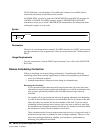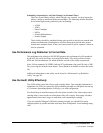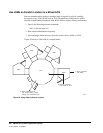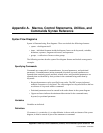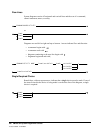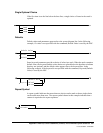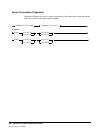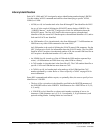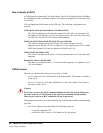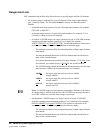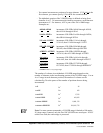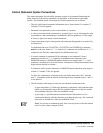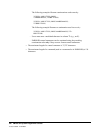
434 VM/HSC 6.0 System Programmer’s Guide
1st ed., 6/30/04 - 312579601
How to Specify a CAPid
A CAPid specifies a particular CAP in the library. Each CAP is identified by the LSMid of
the LSM that the CAP is attached to and a CAP number to distinguish it from other CAPs
in that LSM.
CAP configurations differ based on the LSM type. The following configurations are
possible:
LSM (Model 4410) and PowderHorn LSM (Model 9310)
This LSM is configured with either the standard 21-cell CAP or an enhanced CAP.
An enhanced CAP contains two 40-cell magazine-style CAPs and a one-cell priority
CAP (PCAP). The 40-cell CAPs function independently.
WolfCreek LSM (Models 9360-050, 9360-075, and 9360-100)
This LSM is configured with a WolfCreek CAP which contains a 20-cell
magazine-style CAP and a PCAP. An optional 30-cell, magazine-style CAP, called a
WolfCreek optional CAP, may be added to the WolfCreek CAP.
TimberWolf LSM (Model 9740)
This LSM is configured with either a 14-cell permanent rack or a 10-cell removable
magazine.
StreamLine Library (Model 8500)
This library is configured with 3, 13-cell removable magazines. An optional 39-cell
CAP can be added.
CAPid Formats
There are two formats that can be used to specify a CAPid:
• AA:LL, where AA is the ACSid and LL is the LSM number. This format is referred to
as the lsm-id.
• AA:LL:CC, where AA:LL is the LSMid and CC is the CAP number. This format is
referred to as the cap-id.
Caution:
Do not use a colon as the MVS command delimiter because the system will process
the colon in the new CAPid format as the end of the command. All information
following the colon in an HSC command will not be processed.
The appropriate format to use is determined by the CAP hardware and the command being
specified.
•The AA:LL format can be specified in the following situations:
- to specify a standard CAP
- to allow the HSC to select a CAP based on CAP preference.



